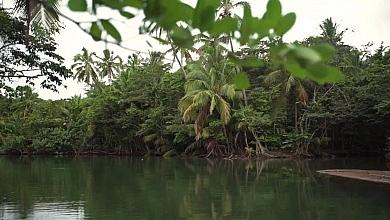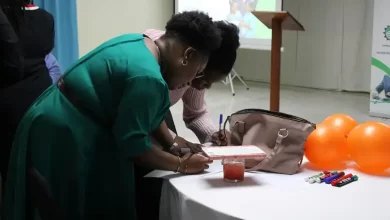CREAD’s Statement On International Day Of Disaster Risk Reduction

On this International Day of Disaster Risk Reduction, we at the Climate Resilience Execution Agency for Dominica (CREAD) believe that never has it been more critical for the promotion of action to reduce social vulnerability, risks of natural hazards, as well as, related technological and environmental disasters.
This day celebrates how people and communities around the world are reducing their exposure to disasters and raising awareness about the importance of managing the risks that they face. In Dominica this remains evident as we can still see traces of persons still trying to piece their lives back to some semblance of normalcy.
Dominica continues to take concrete measures to mitigate disaster risks. We cannot prevent natural disasters, but every concerted effort is being made to reduce the risks associated with all potential natural catastrophes. In this regard, CREAD has been at the forefront of Dominica’s resilience journey, working closely with Government, civil society, private sector, the international donor community and most importantly, the people of Dominica, to create the first climate resilient nation in the world. The task of building a climate resilient Dominica must be all-inclusive!
In 2018, Government crafted and endorsed the National Resilience Development Strategy (NRDS) and from this, the Climate Resilience and Recovery Plan (CRRP) which seeks to operationalize the NRDS was born. The CRRP sets forth specific and detailed targets as well as defines initiatives to take us from where we are now and where we intend to be by 2030. It also outlines what is required to achieve our objectives like financing and strategic partnerships.
Fundamentally, the vision of building a climate resilient Dominica is about significantly reducing the impact of, and time to recover from, climatic and other natural shocks, as well as boosting the overall socioeconomic development trajectory of the country.
The NRDS stipulates that, at the highest level, the CRRP should reflect three pillars of resilience, namely:
- Climate Resilient Systems,
- Prudent Disaster Risk Management Systems, and
- Effective Disaster Response and Recovery.
The CRRP expands these three pillars into six results areas for a climate-resilient Dominica, namely:
- Strong Communities,
- Robust Economy,
- Well planned and durable infrastructure,
- Enhanced collective consciousness,
- Strengthened institutional systems, and,
- Protected and sustainably leveraged natural and other unique assets.’
Based on these six (6) results areas, the Government of Dominica is committed to achieving 20 Climate Resilience Targets by 2030 and these targets will be realized through about 50 planned and on-going initiatives that are closely aligned to the six results areas. Of these, ten (10) critical high-impact climate resilience initiatives will be delivered as a matter of immediate priority.
Presently, the Government of Dominica with support from CREAD is constructing Emergency Shelters at Castle Bruce, Jimmit and the Kalinago Territory which will accommodate a total of 950 persons. The Government continues to ensure that resilient infrastructure is a priority in all its capital projects.
Making certain that the Dominican people are the foundation of the resilience agenda and transformation, aggressive community engagement in the most vulnerable communities is underway where the CREAD community team is at this time assisting with disaster management plans and guidance towards building resilient communities.
Another exciting project is the development of an innovative hurricane protection product that will allow households, small businesses, and farmers to buy protection against the damaging effects of future hurricanes. CREAD is pleased to collaborate with a group of international partners for the creation of a parametric insurance product, which will contribute to the resilience of Dominica. This new concept is currently under development and will be piloted starting in January of 2021.
There are a number of projects in train to facilitate the resilience agenda and take Dominica’s journey towards resiliency forward. These will all be brought to the attention of the Dominican people in the coming months and we will also be continuing our public engagement as we seek to include every Dominican in the resilience process.
Finally, we continue to work assiduously with all ministries in aligning their work with the country’s climate resilience targets. I thank you.
“We are all in this together”
This article is copyright © 2020 DOM767








